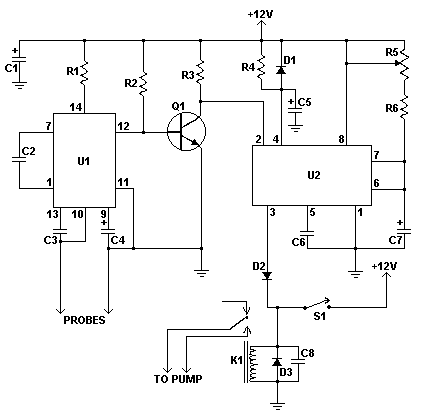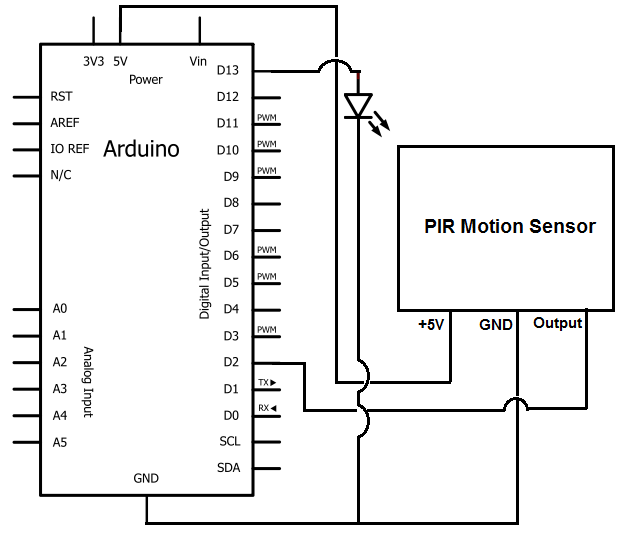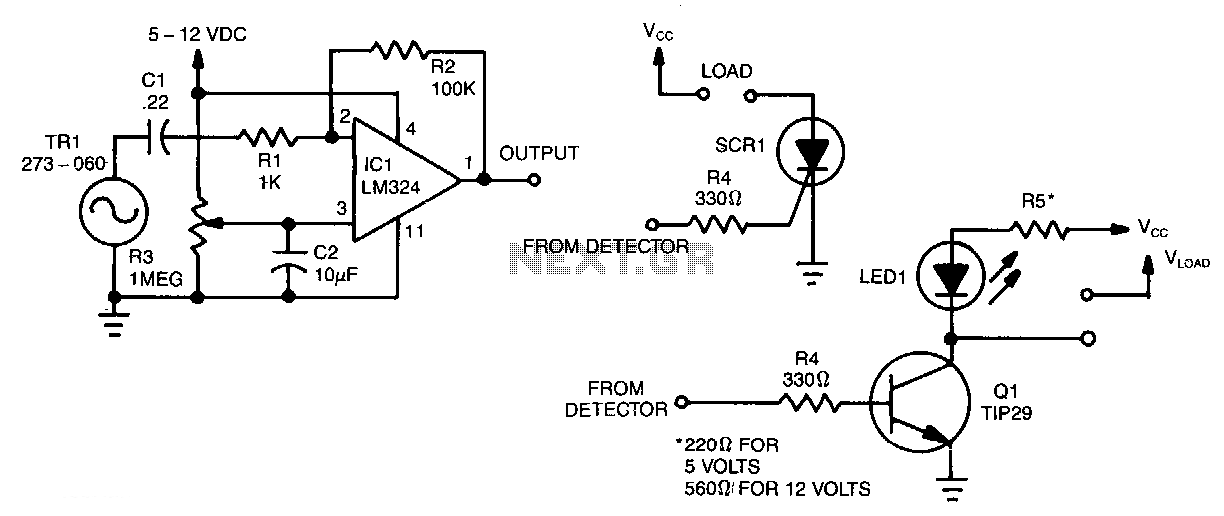
METAL DETECTOR

When the receiver is tuned to a medium wave radio station, feedback howl caused by the transmitter may occur when the coil and radio are positioned above or near a metal object. The search head is constructed from a margarine tub, with a small radio receiver fitted inside the cover, which also serves as the wound coil on a disc. This schematic illustrates the transmitter circuit housed in the box near the handle. The coil L1 is located in the search head, and the wires for this and the earphones run down the hollow tube of the handle. The detector was initially created for the enjoyment of electronics, without prior experience in treasure seeking. An outing was undertaken with a knowledgeable companion to search a field designated for future housing development. The search commenced at a gate beside railway lines, with the detector signaling frequently. After uncovering various metal scraps, the search moved to the center of the field, yielding more intriguing finds, including a pocket knife and a brass button. This experience highlighted the engaging nature of treasure hunting.
The described circuit operates as a basic metal detector utilizing a medium wave radio frequency. The transmitter circuit, located in a portable box, generates signals that are transmitted through the coil L1 situated in the search head. The design of the search head, made from a margarine tub, allows for lightweight and portable usage while housing the radio receiver and coil effectively.
The operation of the metal detector relies on the principle of electromagnetic induction, where the coil generates a magnetic field that interacts with metallic objects. When a metal object is detected, it alters the magnetic field, leading to a change in the signal received by the radio. This change is then amplified and indicated through the earphones, alerting the user to the presence of metal.
The schematic includes essential components such as resistors, capacitors, and transistors that help to modulate the signal and enhance the sensitivity of the detector. The choice of components impacts the overall performance, including the range and the type of metals that can be detected.
The hollow tube of the handle not only provides structural support but also serves as a conduit for the wires connecting the coil and the earphones to the transmitter circuit. This design ensures that the detector remains lightweight and user-friendly while maintaining functionality.
The experience of using the detector in various environments, such as the field adjacent to railway lines, demonstrates the practical application of the circuit. The findings, from scrap metal to more interesting artifacts, underscore the effectiveness of the design in real-world treasure hunting scenarios. This circuit design can be further refined or modified for improved performance, including enhancements in sensitivity and discrimination between different types of metals.When the receiver is tuned to a M. W. radio station the resulting feedback howl, caused by the transmitter can be set to alter, or appear when the coil and radio are above or near a metal object Here is a pictured of the search head. It is made from a margarine tub. the small radio receiver is fitted inside the cover which is the wound coil on a disc . This is the schematic for the transmitter circuit which is housed in the box near the handle. The coil L1 is actually in the search head. the wires for this and the ear phones run down the handle hollow tube. I originally made this detector for the fun of doing the electronics and had no experience in the treasure seeking aspect of metal detectors. My son Bobby has this experience, so I decided to accompany him on a treasure hunt. We spent a whole Sunday afternoon searching a field which had been earmarked for house building and was lying redundant.
My son was in charge of the spade work which pleased me, as this can be quite hard work on uncultivated ground. I operated the detector and found this, like fishing, completely addictive, with the well known, " just another five minutes" syndrome.
The fading daylight finally finished the search for the day. The field lay alongside the railway lines and we started at the gate and walked along parallel with the lines, immediately the machine started to signal and did so every few minutes. after turning up many bolts nuts nails and scrap metal we came to the conclusion this was the area the railway workmen had used, and moved into the middle of the field.
We now started to find more interesting items The first was a pocket knife in nice condition, I was intrigued by the stain at the tip of the blade It could have been blood or maybe tobacco. Later a brass button slightly bashed but still with traces of a coloured design on it. This was my first taste of treasure seeking, and it proved to be very interesting and I can understand how it is so popular with so many people.
My son is very accomplished detector and has found some very valuable objects. 🔗 External reference
The described circuit operates as a basic metal detector utilizing a medium wave radio frequency. The transmitter circuit, located in a portable box, generates signals that are transmitted through the coil L1 situated in the search head. The design of the search head, made from a margarine tub, allows for lightweight and portable usage while housing the radio receiver and coil effectively.
The operation of the metal detector relies on the principle of electromagnetic induction, where the coil generates a magnetic field that interacts with metallic objects. When a metal object is detected, it alters the magnetic field, leading to a change in the signal received by the radio. This change is then amplified and indicated through the earphones, alerting the user to the presence of metal.
The schematic includes essential components such as resistors, capacitors, and transistors that help to modulate the signal and enhance the sensitivity of the detector. The choice of components impacts the overall performance, including the range and the type of metals that can be detected.
The hollow tube of the handle not only provides structural support but also serves as a conduit for the wires connecting the coil and the earphones to the transmitter circuit. This design ensures that the detector remains lightweight and user-friendly while maintaining functionality.
The experience of using the detector in various environments, such as the field adjacent to railway lines, demonstrates the practical application of the circuit. The findings, from scrap metal to more interesting artifacts, underscore the effectiveness of the design in real-world treasure hunting scenarios. This circuit design can be further refined or modified for improved performance, including enhancements in sensitivity and discrimination between different types of metals.When the receiver is tuned to a M. W. radio station the resulting feedback howl, caused by the transmitter can be set to alter, or appear when the coil and radio are above or near a metal object Here is a pictured of the search head. It is made from a margarine tub. the small radio receiver is fitted inside the cover which is the wound coil on a disc . This is the schematic for the transmitter circuit which is housed in the box near the handle. The coil L1 is actually in the search head. the wires for this and the ear phones run down the handle hollow tube. I originally made this detector for the fun of doing the electronics and had no experience in the treasure seeking aspect of metal detectors. My son Bobby has this experience, so I decided to accompany him on a treasure hunt. We spent a whole Sunday afternoon searching a field which had been earmarked for house building and was lying redundant.
My son was in charge of the spade work which pleased me, as this can be quite hard work on uncultivated ground. I operated the detector and found this, like fishing, completely addictive, with the well known, " just another five minutes" syndrome.
The fading daylight finally finished the search for the day. The field lay alongside the railway lines and we started at the gate and walked along parallel with the lines, immediately the machine started to signal and did so every few minutes. after turning up many bolts nuts nails and scrap metal we came to the conclusion this was the area the railway workmen had used, and moved into the middle of the field.
We now started to find more interesting items The first was a pocket knife in nice condition, I was intrigued by the stain at the tip of the blade It could have been blood or maybe tobacco. Later a brass button slightly bashed but still with traces of a coloured design on it. This was my first taste of treasure seeking, and it proved to be very interesting and I can understand how it is so popular with so many people.
My son is very accomplished detector and has found some very valuable objects. 🔗 External reference
Warning: include(partials/cookie-banner.php): Failed to open stream: Permission denied in /var/www/html/nextgr/view-circuit.php on line 713
Warning: include(): Failed opening 'partials/cookie-banner.php' for inclusion (include_path='.:/usr/share/php') in /var/www/html/nextgr/view-circuit.php on line 713





